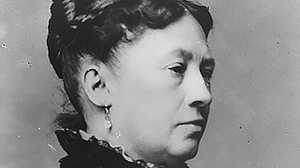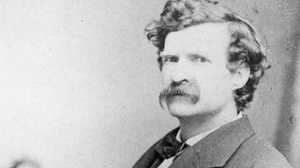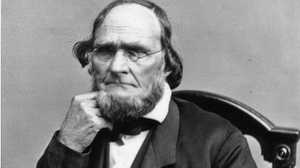Grant's Greatest Battles

As a cadet at West Point, Ulysses S. Grant was an indifferent student. But as a young soldier in the Mexican War, he had carefully studied the work of generals such as Zachary Taylor and Winfield Scott. When he took command of his own troops in the Civil War, Grant combined what he had learned with his own considerable talents to win an impressive string of battlefield victories. He made his reputation in Tennessee, at Fort Donelson and at the Battle of Shiloh. Of his later victories, three that stood out were the Vicksburg, Chattanooga, and the Overland campaigns.
At Vicksburg, Mississippi, Grant hoped to break the Confederate grip on the Mississippi River once and for all. If the Union controlled the Mississippi, the Confederacy would be broken in half. Confederate forces in the East could no longer receive supplies and troops sent from the West. But taking the city proved a challenge. The city sat on high bluffs overlooking the river. From the bluffs, Confederate guns could rain fire on any Union boat. North of the city lay a tangle of thick woods and swamps. Marching men through them was impossible.
In a campaign beginning in late 1862, Grant did everything he could think of to get at Vicksburg. First, Grant tried to secure a foothold north of the city. He sent troops under General; William Tecumseh Sherman down the Mississippi in boats to the place where the Yazoo River flowed into the Mississippi. Sherman and his men steamed up the Yazoo to attack Confederate forces at Chickasaw Bluffs. The attack, made on December 29, failed. In early 1863, Grant tried to hack a channel through the swamps north of Vicksburg. He hoped to float his men through the channel and attack Vicksburg from the North. Midwestern farm boys eager to fight rebels found themselves waist deep in mud and sawing trees eight feet under water. The task proved impossible.
The solution that finally brought victory was a bold one. Grant moved his men across the Mississippi to the west bank of the river. Then, he marched them south until they were below Vicksburg. On the night of April 16, 1863, Grant sent a fleet of gunboats and supply barges down the river in an attempt to push past the Confederate guns. Despite heavy Confederate fire, the ploy succeeded.
Now south of Vicksburg, Grant ferried men and supplies across the river. In a risky move he had learned from Winfield Scott in the Mexican War, Grant cut himself off from his supply lines except for ammunition and medical supplies. He battled his way to Vicksburg and attacked the city, but was unable to break the Confederate line around it. Still, he had his enemy completely surrounded. Grant ordered his men to dig in, and after a two-month siege, the starving Confederates surrendered. From the Confederate commander, Simon Bolivar Buckner, Grant demanded unconditional surrender. The Mississippi belonged to the Union, and Grant was a hero.
At Chattanooga, Tennessee, in September 1863, it was Union troops who were in danger of being starved out. There, the Army of the Cumberland under General William S. Rosecrans was nearly surrounded by Confederates under General Braxton Bragg. Only one road allowed supplies in; food was scarce and winter closing in. Abraham Lincoln understood the danger of losing an entire army. To prevent it, he named Grant commander of all forces from the Appalachians to the Mississippi, and ordered him to rescue Rosecrans.
After replacing the nervous Rosecrans with the steadier George H. Thomas, Grant began the campaign that would save the Union from disaster. First, Grant called forward the Army of the Tennessee, which he placed under Sherman's command. Then, he worked to bring much-needed supplies to the Union troops.
Grant ordered 8,000 troops under General G. M. Dodge to rebuild the railroad from Nashville to Stevenson, just a short distance from Chattanooga. Within 40 days, Dodge and his men repaired 102 miles of railroad track and rebuilt 182 bridges. The supply line to Union troops at Nashville was secured, and Grant began to bring in food and weapons.
The battle began on November 23, as Union forces drove back a part of the Confederate line. As he had at Vicksburg, Grant used river transport skillfully. That night, he floated 116 boats down the Tennessee River past the city. These troops pushed back Confederates on the Chattanooga side of the river and built a pontoon bridge. The bridge was used to bring Sherman's troops across the river.
Now supplies and men could be brought across the Tennessee to prepare for an attack. On November 24, forces under General Joseph Hooker took Lookout Mountain and silenced the Confederate guns. The next day, troops under Sherman overcame heavy resistance to break through the main Confederate line on Missionary Ridge. Bragg's Army retreated, and Grant had won another victory.
Grant 's Overland Campaign was his last big push against Confederate General Robert E. Lee's Army of Northern Virginia. At the beginning of May 1864, Grant started toward the Confederate capital at Richmond with 118,000 men. Grant hoped to get around Lee's line and capture Richmond. But his large army could not move fast enough to outmaneuver the smaller Confederate force.
Grant met Lee's army of 64,000 on May 5, in a thick Virginia forest known as the Wilderness. The savage clash that followed horrified even the most experienced soldiers. Men charged blindly through the dense thickets, often firing at an enemy they couldn't see. The air seemed alive with bullets, which shattered branches and even mowed down trees. Dead bodies lay in heaps, sometimes with wounded men trapped under them. Forest fires consumed the wounded men who were too hurt to crawl away.
When the two-day battle ended, Grant had lost almost 18,000 men -- 6,000 more than Lee had. The Army of the Potomac expected to retreat, as they had in all their previous Virginia engagements. But that evening, as Grant rode past the soldiers, they broke out cheering. He was headed South, toward Richmond, not back to Washington in retreat.
To Grant, even the heavy losses in the Wilderness signified a victory. The Confederates had no reserves to replace the dead and wounded. But Grant could call on a huge supply of civilians to fill the Union armies.
Just two days later, on May 8, Grant and Lee clashed again at a crossroads called Spotsylvania Courthouse. Grant hoped to get there before Lee, and take a position between Lee and Richmond. But when Grant's troops arrived, they found the crossroads occupied by Confederates.
On May 10, Grant ordered a direct attack on Lee's line, but failed to break through. For nine more days, Grant ordered charge after charge against Confederate trenches. Union soldiers fought bravely, sometimes even battling the Confederates hand to hand. But Lee's line held. Grant lost more than 18,000 men at Spotsylvania -- probably twice as many as Lee.
Grant's next lunge toward Richmond resulted in one of the Union's worst defeats. At Cold Harbor, Virginia, on June 3, the Union once again smashed against Lee's defenses. Although Grant spent little time on the field that day, he ordered the attacks, which were directed by General George Gordon Meade. Union soldiers charged the Confederate lines repeatedly and without artillery support; the slaughter was incredible. Over the 12 days of fighting in the area, the Union lost some 12,000 men; the Confederates lost nowhere near that number.
Despite this terrible defeat, Grant kept trying to crush Lee and take Richmond. Next, the Union commander set his sights on Petersburg, a city to the south of Richmond. Petersburg served as an important rail link to the Confederate capital. On June 15 and 18, 1864, Grant struck at Petersburg. He failed to take the city, but held it under siege. Just as he had at Vicksburg, Grant starved the Confederates out. It took him nine months, but Grant knew that while he had Lee's army pinned down, other Union armies were destroying the South.
On April 2, 1865, Lee retreated from Petersburg. On April 3, the Union took Richmond. Four days later, in a letter to Grant, Lee indicated he would be willing to surrender. The two leaders met at Appomattox Court House. There, Grant proposed his terms of surrender. Lee's men would be allowed to keep their side arms, horses, and personal property. They would not be held as prisoners, and could go home. Lee accepted these terms, and surrendered the Army of Northern Virginia on April 9, 1865.
On April 26, General Joseph E. Johnston surrendered the last significant Confederate army to General William Tecumseh Sherman at Durham Station, North Carolina. The Civil War ended. Ulysses S. Grant's final campaign had worked as he had intended. At the cost of thousands of Union soldiers' lives, he had beaten the fight out of the Confederacy.







